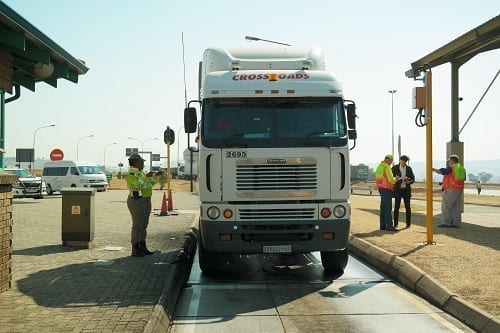Tristan Wiggill gets first-hand experience of what happens behind the scenes on one of South Africa’s most important arterial trade routes.
Spanning Gauteng, Mpumalanga, the Free State, and KwaZulu-Natal, tens of thousands of freight and logistics operators move up and down the N3 toll route daily. Linking the country’s landlocked provinces to the Port of Durban, heavy vehicles constitute more than 30% of all traffic on the route, with 58 million tonnes of freight, on average, carried along the corridor every year. The N3 Toll Concession (N3TC) manages the N3 route from the Heidelberg South interchange to Cedara at the top of Town Hill – a distance of approximately 415 km. The section north of the interchange as well as the section from Durban/Pietermaritzburg to the port is controlled by Sanral. N3TC has 30-year concession contract with Sanral, which started in 1999 and runs until the end of October 2029. The toll concession’s mandate is to finance, design, construct, operate, and maintain its section of the N3 highway. The contract is comprehensive and – according to Con Roux, commercial manager at the N3TC – it is well managed by Sanral. “N3TC has a great relationship/private-public partnership, which is in everyone’s interests,” he says. Pulling out the stops Our first stop of the tour was at the Heidelberg Traffic Control Centre (HTCC), which is a great facility, especially for southbound traffic. It provides a wonderful opportunity to weigh trucks heading south and check them for roadworthiness. Fred Kleynhans is the managing director of Zimele Investment Enterprises Company (ZIEC), which operates the centre, through a joint venture known as the LCO (Load Control Operations), which works in collaboration with TRAC, N3TC’s concession counterpart on the N4 Maputo Corridor. The LCO controls the operations, as well as the maintenance of the centre. In the past, the HTTC only had vehicle weighing facilities but, around December/January, the VTS (Vehicle Testing Station) facility was added to prioritise road safety. The VTS is used to evaluate overloaded vehicles and gives trained officers the ability to properly inspect wear-and-tear items. The HTCC relies on competent traffic officers to operate the roadworthy testing equipment. Officers need to be trained as vehicle examiners, which the LCO is currently busy with. Every vehicle found to be overloaded is supposed to be sent to the VTS facility, to evaluate the vehicle’s brakes and other possible defects, such as tyres, headlights, and ball joints. Using an inspection pit, officers inspect safety-critical components like steering racks. After receiving a Section 56 Notice, drivers park in the holding facility at the back of the centre to rectify the load they arrive with, should it be in conflict with the laws of the land. Once rectified, drivers are allowed to return to the VTS. Should there be vehicle defects, in terms of the Road Transport Quality System (RTQS), he/she is allowed to return to the VTS and, once passed, can return to the scale. Should everything have been rectified, he/she is then allowed to exit the facility.Officers use their discretion when choosing which vehicles to place on the VTS. But, for the LCO, it is crucial that overloaded vehicles are tested. Even a marginally overloaded vehicle can cause a 40% to 60% increase in brake use, which can lead to brake failures along the route – especially on Van Reenen’s Pass, which is taxing on heavy vehicles. If a truck fails on the condition of its brakes, for example, it is removed from the road. If it’s a minor issue – like a faulty headlight – the LCO allows the driver to park and rectify the problem. There are five categories that are looked at that can result in vehicles being removed from the road. For offenders, the average time spent in “detention” can vary between five and six hours. The LCO team doesn’t hasten to correct load shifting because doing so is a penalty, designed to discourage offending operators. Habitual overloaders are reported to the RFA (Road Freight Association) and letters are addressed to the management of the companies involved. In some cases, responses to this process are excellent and cooperative, and, in other cases, the LCO never hears of felonious hauliers again. Between 8 000 and 11 000 vehicles are weighed here per month, with the overloading factor in the region of 3% to 5%. A weigh-in motion apparatus picks up if a vehicle is potentially overloaded. If so, a red light comes on and the driver is required to pull in over the static scale. The vehicle is then measured in terms of gross vehicle mass and axle loads. If any of these factors are found to be in conflict with the law, the vehicle has to go to the back yard, where either axle corrections or load removal are done. An on-site contractor operates the load removal, taking it to a place of safety. Another vehicle, already weighed, then picks up the load before re-weighing, in order to balance the removed load with the taken load. This is all reported through complex computerised systems that generate the necessary monthly reporting statistics. All staff operating the systems are trained and certified through the Trafman system. The HTTC has an SLA (service-level agreement) in place to regularly (every six months) calibrate its scales. Calibration certificates are displayed to mitigate disputes. Scale masters operating the computers are trained by the providers of the equipment – for the scale itself and on the software used to operate it. Scale masters without these two certificates are not allowed to weigh vehicles, as their professional credentials may be challenged in court. There are other facilities like the HTTC at Midway and Mkondeni, which are dependent on traffic officers being on duty. A facility like the HTTC costs around R250 million – in each direction – and the monthly operating costs are high, too. In what can be described as a compromise to road safety, the VTS at the HTTC only functions when appropriately trained traffic officers are present. There are issues with traffic officer training; governmental budget constraints also persist. This is frustrating for the LCO, as Sanral has gone to great lengths – at great expense – to provide the high-tech equipment and qualified manpower, even having secured private sector involvement. The HTTC can issue warrants of arrest. Vehicles are stopped and sent to the back before payment is made. The HTTC has a good relationship with the Department of Justice, and manages all original, signed warrants, which it executes with the traffic department. Read more in part two…









